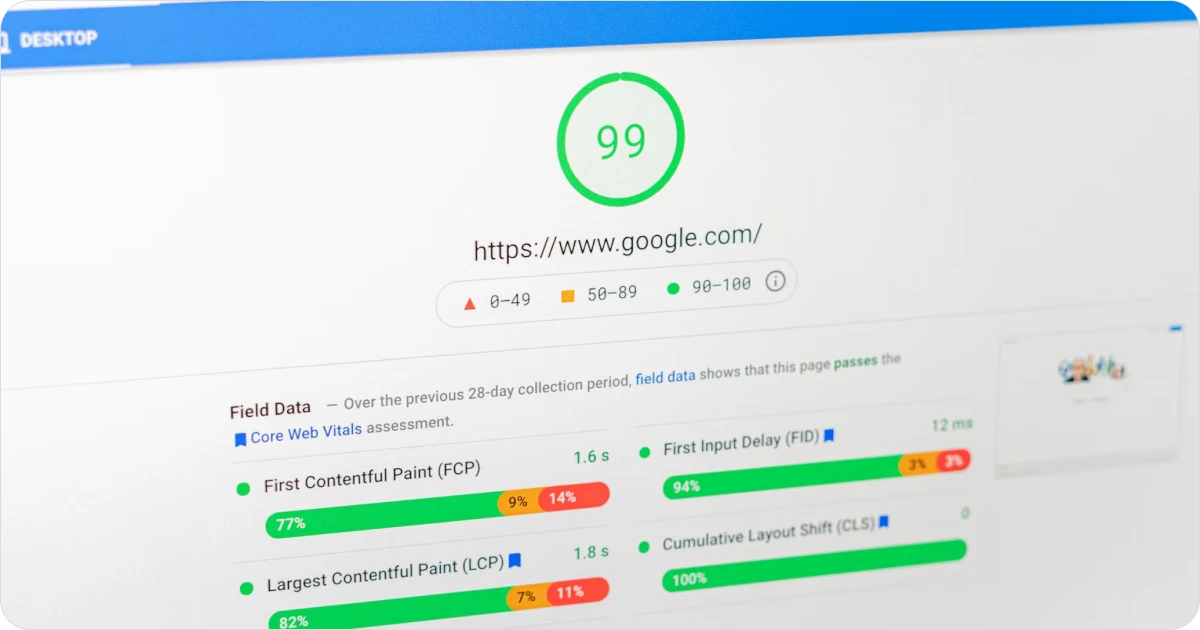



The growing popularity of second-screen behavior while watching TV is here to stay. It’s vital to understand these new habits to win in keeping your audience engaged, especially if Millenials and Gen Z matter to you. Together, they make up 41% of the US population and are the future.
Second Screen Habits: What The Data Tells Us

Once upon a time, second-screen behavior was described negatively as multitasking. The world has changed – these habits are how today’s audiences engage with TV programming and online information.
Let’s examine how common second-screen behaviors have become with Millenials and Gen Z audiences. The following data is based on a 2021 survey of 1000 adults.
1. Three Quarters of Millenials and Gen Z Are Heavy Second-Screen Users
A recent survey found that the overwhelming majority of Gen Z (76.5%) and Millennials (76.4%) state that they “often” or “always” browse the internet on a separate device while watching TV. In contrast, the same measure for overall US adults is 62%.
2. The Smartphone Is The Default Second-Screen

Not surprisingly, smartphones are the second-screen device of choice for Millennials and Gen Z. Surveys estimate that 96-98% of Gen Z own smartphones, while about 95% of Millennials own a smart phone. In comparison, 85% of the US population as a whole owns a smartphone.
3. These 5 Types of TV Shows Have The Highest Second Screen Usage
The story starts to get more nuanced when discussing the specific TV shows associated with second-screen behaviors. The top five TV genres with high second-screen usage include reality shows, talk shows, game shows, live sports, and children’s shows.
While second-screen usage is widespread in these genres, it is still common elsewhere. For example, the sitcom genre has 50% second screen usage.
If you’re unclear where to focus your second-screen resources, start with the top 5 genres first. You’re likely to get the greatest payoff for your efforts there.
Download our white paper “Generation Z and the Rise of the Second Screen” and transform your engagement strategy today.
4. What Second-Screen Activities Are Most Popular?
The most popular second-screen activities include the following:
- Check email
- Social media
- Texting/message
- Playing games
- Shopping
- Looking up information
Only a tiny fraction (10% of the population is engaged in professional work while watching TV. For the most part, second-screen behaviors are leisure-oriented.
5. What About Second Screen Social Media Usage?
Social media platforms are not equal regarding the second-screen context. For Gen Z, Instagram is the most popular second-screen platform. Millennials prefer Facebook while watching TV.
What The Rise of Second Screen Behavior Means For You
There are a few significant implications for second-screen behaviors. Your audience’s attention will drift away toward their smartphone regularly while watching TV. Given that tendency, the next question is: how can you offer a compelling digital experience that keeps your audience engaged?
Start by checking that you have the right building blocks for second-screen success. The following checklist will ensure you have everything you need to start.
1. Have You Participated In A Second-Screen Experience Recently?
There’s nothing like direct experience to understand the second-screen experience. This is one of those rare times when you can watch TV and call it work!
Pick a show and pull out your smartphone while you watch. Go through the most common second-screen activities like checking email, social media, and texting with friends.
Reflect on your second-screen experience. What did you like most? Did you find your attention wandering from the TV? Did you connect online with other people watching the same show?
2. Are Digital and TV Teams Aligned?
For broadcasters, aligning your TV and digital teams is a powerful way to deliver a second-screen experience. For instance, if your new season launches on Thursday night, then your online team should have content prepared to build anticipation in advance.
3. Is Your Social Media Prepared For Engagement?
Social media is one of the most popular second-screen activities. Given that reality, getting your social media staff ready for engagement is vital. You can start by creating and scheduling content to align with the TV show. Aligning is easiest with traditional TV broadcast schedules. With streaming, there is usually some online buzz when a popular series is about to become available.
There’s an even better way to engage your audience socially: set up a live blog right on your website. All the social features your audience expects – liking, commenting and sharing – will be there. Even better, you can curate a brandsafe experience, so that your audience doesn’t get turned off by inappropriate or off topic content.
4. Have You Tested Your Website For Mobile Lately?
Searching for information about what they’re viewing is one of the most common second-screen experiences. With that behavior in mind, taking a few minutes to test your website on an actual smartphone is smart. Smartphone simulators are helpful for testing but don’t capture the experiential side.
While viewing your website on your smartphone, take note of the following:
Speed

In a second screen context, the speed of your mobile website is critically important. Your audience might check their phone for a few seconds, and if your website is too slow, you’ll lose engagement.
Navigation
Is your website navigation easy to use on a mobile device? Plenty of websites streamline navigation for mobile, but it is easy to go too far with this.
Sharing Features
The most common second-screen activities are using social media and looking up information. To grow your audience, your website needs to make it easy to share pages, articles, videos, and more on social media. Check if your sharing functionality runs smoothly on a smartphone.
5. Offer A Chat Experience

Chatting and texting are one of the most common second-screen experiences. That’s an opportunity to increase audience engagement on your website! With Arena Live Chat, you can plan and launch a live chat experience in minutes.
Arena Live Chat includes both manual and automation moderation features which means you can offer a brand-safe experience to your audience, on your own properties, while collecting first party data.
Our research has shown that Gen Z prefers curated social experiences – think Discord – versus older feed based platforms with less relevant content. Arena makes it easy to meet these expectations right on your website.
For more guidance on getting started fast, check out our guide: How To Setup A Second Screen Experience In Less Than An Hour.
The Next Step To Launch Your Second-Screen Experience
Second-screen behavior is very popular with Gen Z and Millennial TV audiences. Your audience is going to pick up their smartphone while watching TV. The only question is whether or not they will pay attention to your brand at those moments. Offering an online community experience on your website is one of the best ways to grow audience engagement. Find out more about Arena’s community experiences.



